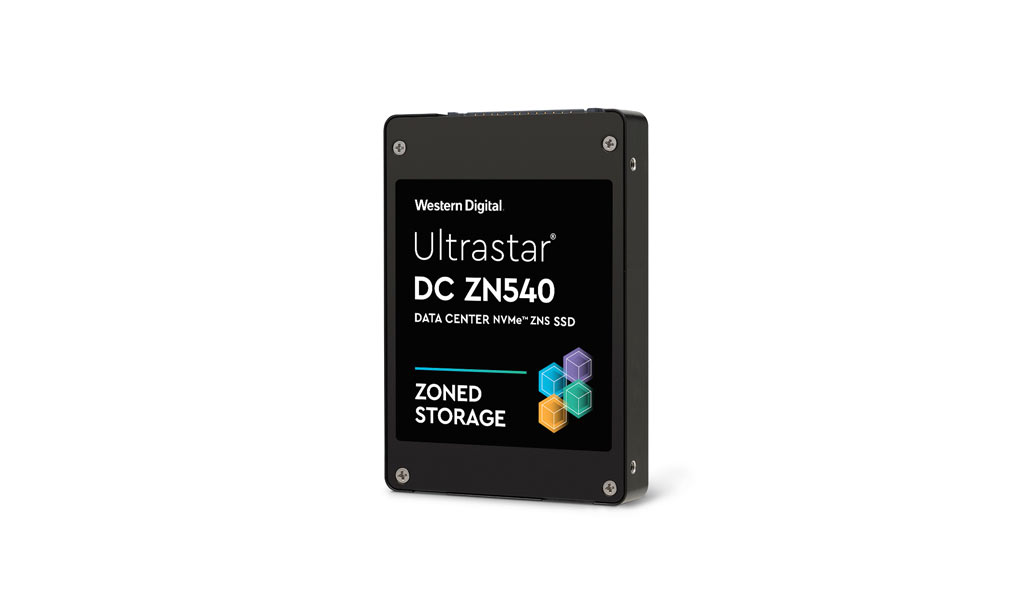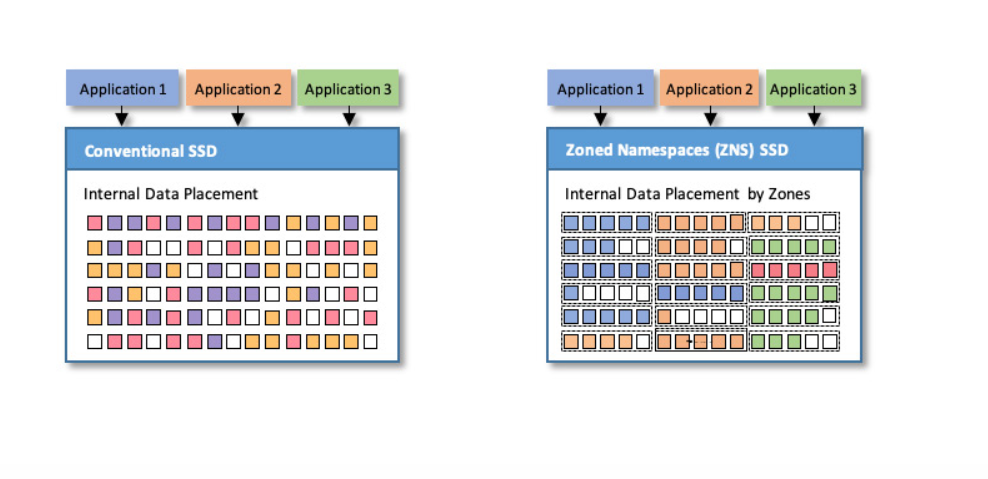Western Digital announced the limited sampling of its new Ultrastar DC ZN540 ZNS NVMe SSDs to select customers.
The Ultrastar DC ZN540 ZNS SSDs come in up to 8 TB in a U.2 form-factor. It features a dual-port NVMe controller designed for data-centric applications and multi-tenancy environments like event stream processing.

According to the press release, legacy storage architectures can no longer keep up with today’s data-intensive environments. The exponential growth of data needs new storage solutions based on new storage architectures.
To meet this demand, Western Digital started its Zoned Storage Initiative that specifically targeted open data infrastructure.
What is zoned storage?
When SSDs first hit the market, its developers created the flash translation layer (FTL) to manage how a logical file system gets written to physical flash memory. The idea was to make SSDs compatible with the existing technology stack used by HDDs. And since flash memory chips have a certain number of write/erase cycles, FTL also did housekeep chores like garbage collection and wear levelling.
While FTL worked well in the heydays, it’s actually starting to impede today’s data storage performance, especially once the data flow reaches into the zettabytes. The numerous background tasks induce processing overheads, and with the rise of high capacity, low endurance quad-level cell NAND flash memory, write amplification can hamper the drive’s longevity, especially considering the high data flow in today’s data-rich workloads.
To address these issues, the NVMe organization is developing the Zoned Namespace standard, or ZNS for short.
Zoned storage is a new take on traditional storage architecture. It divides the logical block addressing (LBA), a “map” of where data is stored in a storage device, into zones. Essentially, it isolates one area of the SSD from another.
The zones (also known as namespaces) can only be written sequentially, with the stop point marked by a write pointer. Adding data to a zone moves the write pointer until the zone is filled. The data in a zone can’t be randomly replaced. The only way to replace data within an existing zone is to move the write pointer to the beginning of the zone, wiping all the data in the process.
The most important change is what manages the zones. Traditional SSDs let the device control how to store data, but ZNS SSDs pass that control onto the application. This consolidates the data and stores them more efficiently, reducing write amplification in the process. Increasing efficiency decreases the need for background maintenance tasks, thus improving throughput by eliminating processing overheads.
Western Digital says that ZNS SSDs offer four times higher bandwidth improvement over traditional SSDs. Moreover, the company touts that a single ZNS SSD can replace four conventional SSDs without any performance penalties. The optimized ZNS hardware and software stack also reduces latency by 57 per cent, a plus for today’s latency-sensitive applications.
Wide adoption of zoned storage needs an updated software stack, specifically the operating system. The Linux community has spearheaded its development; over the years, it has made significant efforts to support Zone Block Devices. But zoned storage is still relatively new and needs efforts from data infrastructure engineers and developers for broad acceptance.
Western Digital said it would complement ZNS SSDs with high-capacity shingle-magnetic recording (SMR) HDDs.


